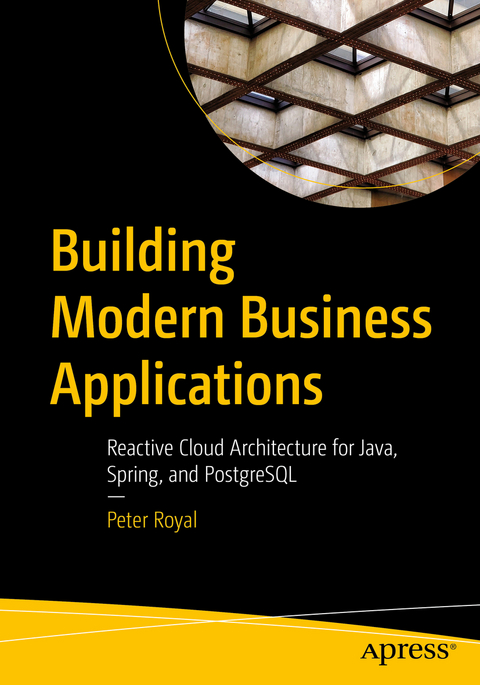
Building Modern Business Applications
Apress (Verlag)
978-1-4842-8991-4 (ISBN)
The book begins with a look at the fundamentals of modern business applications. These fundamentals include business rules and the managing of data over time. The benefits of reactive techniques are explained, including how they are fundamentally aligned with what application developers strive to achieve in their work.
Author Peter Royal equips you with sound guidance to follow as you evolve your existing systems, as well as examples of how to build those systems using modern techniques in Spring, Java, and PostgreSQL.
What You Will Learn
Architect business applications for cloud-based environments
Design sustainable business applications
Integrate GraphQL best practices into business applications
Use property-based testing to exhaustively test possible system states
Think about business applications in terms of message flows
Relate the benefits of reactive systems to business goals
Model time appropriately for business requirements
Who This Book Is For
Practicing software developers who are building business applications, developers who are being asked to deploy into cloud environments that are more volatile than statically provisioned data centers, developers who want to increase the reliability of their systems and are struggling to find the right paradigms and architectures to achieve their goals, developers who see and use capabilities in software in other areas of their lives and want to bring those capabilities into their own work, and developers with experience designing other types of software who want to learn how to design business applications
Peter Royal is a software developer currently residing in Los Angeles, CA. He has been writing software since high school, with his first business application being a calendar tool for his school. Since then, he has written business applications for a variety of industries as a contractor or in-house developer. He enjoys building tools for co-workers and being able to work with colleagues to iterate and customize, with the goal of making tools that are not frustrating to use. He has come to appreciate pragmatic architectures and practices that enable systems to thrive for the long-term.
Part I. Business Applications.- 1. What Is a Business Application?.- 2. The Status Quo (and How It Can To Be).- Part II. Design Prerequisites .- 3. What Is a Reactive System?.- 4. Why Build Business Applications as Reactive Systems?.- 5. What Is a Business Rule?.- 6. Managing Time.- Part III. Design.- 7. Constraints and Principles.- 8. High-Level Data Flow.- 9. Command Processor.- 10. Command Generator.- 11. Event Materializer.- 12. Testing, Monitoring, and Observability.- 13. Required Technologies.- Part IV. Implementation.- 14. Building with Modern Spring, Java, and PostgreSQL.- 15. Expansion Points and Beyond.
| Erscheinungsdatum | 17.12.2022 |
|---|---|
| Zusatzinfo | 2 Illustrations, black and white; XX, 186 p. 2 illus. |
| Verlagsort | Berkley |
| Sprache | englisch |
| Maße | 178 x 254 mm |
| Themenwelt | Informatik ► Office Programme ► Outlook |
| Mathematik / Informatik ► Informatik ► Programmiersprachen / -werkzeuge | |
| Mathematik / Informatik ► Informatik ► Software Entwicklung | |
| Schlagworte | Command Query Responsibility Segregation • CQRS • Event Sourcing • GraphQL • Java • jqwik • junit5 • Messaging and Message Driven • PostgreSQL • Project Reactor • Property-Based Testing • R2DBC • react • reactive programming • Reactive Systems • Software Design • Spring Boot • Spring Framework • Testing |
| ISBN-10 | 1-4842-8991-9 / 1484289919 |
| ISBN-13 | 978-1-4842-8991-4 / 9781484289914 |
| Zustand | Neuware |
| Haben Sie eine Frage zum Produkt? |
aus dem Bereich


